|
In my altruistic medical practice, I`m often called upon called upon to give a second opinion on the management of all kinds of illnesses. This usually originates in friends and family, from all parts of the world. Though it does not give me any materialistic benefits, it does help me understand medical practice around the world, doctor and patient perspectives and most importantly people`s behaviours and attitudes. My `clientele` is usually well to do, educated, accomplished and sometimes well researched. Some are doubters, some have specific questions, some are pressurised by their peers and some do it as a prop before taking a final decision. I usually feel quite honoured and important and try to do a good job. Especially because some of the professionals I have looked up to and it is sometimes a unique opportunity to get into their minds. Since this process takes place online and over the telephone, this gives a unique opportunity of what health in the digital age would look like. More often than not, I marvel at the pains that the doctor has taken to investigate and formulate a management plan and it is just a matter of reiterating something that someone has already said and explaining in a way that the client is most comfortable with. This is completely understandable because most patients due to anxiety or otherwise do not actually follow in details what the doctor is saying and it usually takes a more familiar professional (usually the General Practitioner) to explain what the consultation was about. Some are in shock and disbelief and though they do understand the gist, but fail to understand the right questions and thus need to be spoken to with a lot of tact. Though it is imperative that the client is taken into confidence, it does happen that a certain adverse report may set the client back and a lot of social factors do come into play and the mind begins to wander during the consultation resulting in lack of effective communication. I have no answers as to what is the best solution to this because as a doctor I have probably been guilty of my client not fully comprehending what the management essentially entailed, but I`ve always been blessed with an army of extremely skilled specialist nurses and a multidisciplinary team who have worked tirelessly behind the scenes and clients have been completely up to speed in the next consultation. Whether they have sought a second opinion or not is anybody`s guess. The real test comes in the case of a conflict, when the client is completely dissatisfied with the opinion or outcome of a consultation. This scenario has multiple possibilities. One, when I am disagreeing with what the written and verbal communication from the client is. There are multiple ways of tackling this. The first approach is to try to gauge what was in the mind of the practitioner and what information and resources did the practitioner have both medically and socially before giving his opinion? What the local and accepted practice is? Whether the cause of the conflict is due to a certain bias of the client? The opinion needs to be balanced and mature taking into consideration multiple angles and proper reasoning for your views must be given. The best option (if possible) is to speak to the practitioner. Usually doctors are happy to speak to a fellow practitioner as then more scientific evidence can be discussed. In some cases of disagreement, I have found that though the opinion was scientifically correct, there has been some misunderstanding or there were some family or social issues that the doctor at the time was not aware of. Though clients are a bit wary of reprisal from the doctor for seeking a second opinion. This is something normal and must not be discouraged. In fact, in most instances it gives credibility to a practitioner and his opinions. The contentious question of course is retention of clients. This an extremely delicate issue. The choice of a practitioner depends on multiple factors many of which are subjective. Sometimes it is difficult to comprehend why a client chooses a certain professional over other. But by no means that a second opinion should be denied to anyone.
Digital health has the propensity to facilitate a harmonious environment where clients can seek opinions transcending geographic barriers, discuss with people in similar situations, read and converse about people with similar experiences. Professionals on the other hand are able to seek advice, confer with other professionals and gauge the mood and opinions of clients in order to improve their practice and do their best for clients which is the ultimate goal.
1 Comment
One of the barriers that change in medical care is facing is an increased trust deficit between clients and healthcare professionals. Clients find it increasingly difficult to rely on the opinion of a single medical practitioner and often go in boundless doctor shopping and sometimes waste valuable time in beginning formal management. This is extremely disappointing because a trusting doctor-patient relationship is at the foundation of good healthcare. Most people however accept that though there are a few rotten apples, healthcare professionals on the whole aim to do a good job. The main antagonism is towards the delivery of healthcare where the main complaint is that far from it being a delightful experience, clients feel that they have not got their money`s worth. Because of this, there is extreme cynicism and suspicion every time a new form of management is suggested. People are scared to go to a medical practitioner and the thought of falling ill or developing a chronic ailment terrifies them more than falling ill. Unfortunately, patients do not have confidence in the services provided. Whether it is mere misperception or fact based on people`s experiences is anybody`s guess. Though major healthcare providers have gone on a patient contact and public relations overdrive, the fact is that nothing much has changed. However, all is not lost, because on the question of remote management and algorithmic management of illness, most people are sceptical and want to speak to a real doctor for their problems, rather than speak to a computer. Secondly, since healthcare is a mandatory service for humans, there is a bigger and easier possibility that these problems can be rectified. The most important bit of the approach is to convince people that we appreciate their concerns and we are genuinely interested in improving the client experience by first understanding where the misunderstanding is and taking proper steps to solve this and verifying whether we are successful. As healthcare personnel and providers, we need to be empathetic and use words which improve effective communication. The best start is to accept that there is a problem. A robust traditional healthcare system with good mobile health support can make a good start. Currently, the perception of mobile health for some is that healthcare professionals wish to further distance themselves from patients. Though people do desire empowerment to an extent, there is also need of proper engagement. The fact that digital health and telehealth helps patients by avoiding unnecessary visits, but this by no means distances patients’ needs to be explained. In this regards smart business models need to be evolved often in conjunction with interested clients. This promotes transparency which is the most important desired element in medical practice.
Digital health improves continuous patient contact and intervention, which used judiciously can evolve a system that cares. On-demand education of patient and their relatives, step down care following hospital discharge and on the whole access to help 24/7 is the most desirable element of healthcare for the rich, poor, educated, not so educated alike. People who can pay, always wish to pay, but do not wish to be taken for a ride. An ill person is vulnerable and has multiple anxieties and medical management is only one of them. We must assume that every patient is well connected and every advice, treatment or procedure is being scrutinized in various parts of the world in an instant. Effective communication and delivery of the correct information is the key. Healthcare professionals should be transparent and bold and stand scrutiny voluntarily to win the confidence of the people. People are extremely knowledgeable and sometimes confused with the information overload these days. All they need is to be led in the right direction. Honestly, the time that I get to spend when I do not don the doctor`s coat and be with clients as people are extremely insightful and rewarding. People do not expect too much. All they need to see is the human in that coat. They are aware of the changes all set to sweep healthcare with the advent of better algorithms, supercomputers, AI, Deep Learning. Some of them are even involved in building some of these. But currently, technology needs a gradual introduction, because the climate needs to change and the air needs to be cleared. My generation is addicted to our mobile phones. The perception of elders is that we have a lack of human interaction and only stay indoors. Most adults wish for the use of the mobile phone to be restricted. What people don’t realise, is there is more to our generation than what meets the eye. Sport and exercise is an integral part on our curriculum and we have time dedicated to it. We are exposed to a wide range of sporting activities, both indoor and outdoor designed for all levels of expertise. Apart from physical education and games periods, we have both lunch-time and after school activities which are run and supported by both students and staff. As the use of mobile phones is banned in school, as a result of which many people keenly participate. Some of us, being interested, take every opportunity to hand and get involved in many things. Some, of course are more competitive than others and show great enthusiasm in team selections and sporting trials. The sporting and exercise field is where we make many new friends. We arrange to meet in gyms, pools and fields carry out activities together. We think that this is safe and parents often do not mind. In fact, they support this. Although we didn’t start doing this from a health and lifestyle perspective, we now know that these activities are good for our well being. My passion is water sports. I swim in two clubs, SCUBA dive and in the summer go kayaking. For my parents and I, sport is as important as academics as it is in this field we develop key skills like endurance, determination, concentration and goal setting. Though the weather in the United Kingdom is not always reliable to do outdoor activities, we make the most of it by performing indoor activities. My friends and I take every opportunity to meet up and have fun. As we all have different interest, we are introduced to many different perspectives of exercise. It is very important to get involved in sport and exercise from a very early age, because later it becomes very difficult to adhere to our goals and make it part of our lifestyle. We always encourage peers to try new exercises and join our frequent trips to the gym. Though, we are accused of being a mobile only generation, I believe that this is a myth and we are extremely eager to have fun outdoors, play sport and exercise. I wish to take this opportunity to make people in my age group aware that exercise is a very important aspect of life, and if me and my friends can do it, why cant you?! I do understand that everyone will be champions and professionals in sport, but you never know what you are capable of. So, go outside, there is a beautiful world waiting for you.  Author - Rona Bhattacharya is a 11-year-old school student in the UK. She is an avid blogger, published author and poet.She is an accomplished dancer and singer.She is an endurance swimmer and a PADI certified SCUBA diver. She has been the Sports Ambassador of her school and won the Excellence Award for being the best student. Being very conscious of social issues, she has organised fundraisers and has swum 22 miles, the length of the English Channel in the swimming pool for Diabetes UK to raise awareness for children with diabetes. She is a keen actress and has performed in the Edinburgh Fringe Festival There is now evidence to say that e Health plays an important role in facilitating socio-economic inclusion, improve quality of life, provide patient empowerment through greater transparency, access to services, information and use of social media for health. Though a certain section of society has been quick to adopt and benefit from the use of this technology, there has been another group, which has been slow to adopt, who have concerns over access and affordability of technology, its usability and appropriateness, as well as over digital health literacy. Unfortunately, this is the most vulnerable section of society and as is well known is more prone to diseases. Thus, insufficient knowledge, skills and literacy, lack of user-friendliness and doubts over the meaningfulness of information can also create new health inequalities, which are far more complex and may reflect the flaws of the traditional health system and potentially even aggravated online. This could further deepen the divide between the well-to-do, educated and technologically savvy and the other group, who may not be able to access the best of services. Though, with the ubiquitous penetration of mobile phones and the internet, this gap is getting narrowed, the knowledge gap between proficient and inept users is widening which is resulting in another kind of social inequality. This reflects on the quality of engagement that people are having with the internet, which is varied. With the advent of state of the art technology and rising costs of care, there is a greater expectation from patients about results of management and increasingly personalised healthcare where the patients would have greater autonomy of their care. But the barrier to this form of care is based upon the level of digital education of the patient. This may or may not be proportional to the conventional education level or perceived intelligence. One of the first steps that needs to be taken in this direction is to ascertain the social needs of digital technology in the management process and integrate this into mainstream care delivery. Secondly, it is important to ascertain the digital education level of the client and tailor solutions accordingly. This needs careful design thinking and business model pragmatism to increase digital health accessibility. Often, the problems are very simple to solve and a bit of patience is all that is needed. It is also very important that the traditional methods of patient care are kept robust, before switching to an all-digital set-up. Medicine being a science of uncertainties cannot depend on a single tailored pre-fitted mindset alone. Over reliance on technology may lead to attrition and ultimate rejection of the system.
And finally, along with innovative business models and more efficient and state of the art management, there is a need for not just disease related education, but also succinct and interesting ways of digital education to enable clients who are needy to use digital health. When Richard Branson revealed that Virgin employees are the company's top priority, he brought a paradigm shift in organisational thinking. It however, has long been known that a team where individuals give their 100%, are proud of the brand and the work they do, will beget happy customers and thus lead to the growth of the organisation. Similarly, in healthcare, which is extremely complex, it is mandatory that the professionals are given their due share of respect, autonomy and support in discharging their duties. It is also a fact that healthcare delivery needs an overhaul to achieve better client trust, confidence, compliance and better outcomes. With the advent of digital technology, artificial intelligence and machine learning, there is more a demand for precision medicine. This sometimes sounds like an oxymoron, because experienced practitioners will tell you, that the practice of medicine is not exact science and however clever a computer is, it may struggle in situations which it may not have encountered before or the encounter has been sparse. Secondly, the overwhelming importance of matters like compassion, empathy, trust and communication may just not be the strengths of a robot. It is here that the virtual world will need to work as a support to the decision-making capabilities of the traditional healthcare professional. In today`s world of organisational and managed healthcare, customer delight is of utmost importance. This often determines whether the concerned client will engage further with the organisation or team. Any unsavoury experience or misunderstanding may lead to a trust deficit which will stunt organisational growth. Very often, the reasons for dissatisfaction may not be medical after all. It may just reflect the happiness levels of the client. It is here that the provider which includes the entire team has a high morale, is delighted to provide care and contributes effectively to decision making and thus organisational growth. A huge source of knowledge regarding patient related behaviours comes from unpublished and unreported accounts of health care professionals themselves. Some of these have come from years of burning the midnight oil. They have tried various solutions and developed a system of practice that works in the microenvironment that they work in. These experiences need to be taken on board to design unique solutions. It is thus quite important to take healthcare professionals into confidence when designing solutions which directly influence them. As much as clients and patients deserve to have a voice, frontline medical personnel need to be heard because unless they are convinced about what they are doing, it will be difficult to expect commitment from them. It has now been long established that money alone is not the prime driver of happiness and satisfaction at work. Things like a purpose and meaning in what they do, along with appreciation are more important.
In the changing world of healthcare delivery, especially with the advent of mobile and digital technology, it is now imperative that professionals are supported with training, legal help and support in adjusting to a new system. Managing change, especially in healthcare delivery is difficult unless all stakeholders are taken into confidence. This is because of the ethical and legal implications of every bit of change. The burgeoning rise of the camera enabled smartphone has imbibed a compelling need to have reality confirmed and experienced in everyone. No visit or experience is complete without having experienced it through a camera lens most of which are on mobile phones. Following this, the picture travels across the globe in a matter of seconds and more people are engulfed in the experience. The phrase “I was there” is almost incomplete without the customary selfie, whatever the occasion. The need for visual presentism has not left medical practice untouched. Initially used by medical practitioners to document pathology; with the advent of internet connectivity, images have been transmitted over the last decade for medical opinion. Particularly commonly used has been in the monitoring of wounds. This has now been extended to dermatology, rheumatology, ophthalmology, burns management, occupational and physiotherapy and in surgical specialties. These are however, extremely sensitive medical records that, while they have great potential for medical use, also have the potential to compromise patients’ privacy and confidentiality. There is was always the question of legal and ethical implications. The democratisation of digital photography with the ubiquitous use of camera enabled smartphones and better internet connectivity has enabled people with medical conditions to record and monitor their own problems and send to healthcare professionals to interpret and take decisive action. Sometimes, there maybe transitory events like a resolving facial paralysis or a rash which maybe recorded by the patient and transmitted or even brought to a consultation which may illustrate the events well. While some are extremely articulate in describing their problems, for others a photograph maybe a way of describing problems. Further, these have been extended to actual screening of eyes and transmission of these images to a central hub for interpretation. Patient generated photography empowers the patient to produce very relevant information that makes medical consultation more effective. Secondly, it also reduces unnecessary clinic or hospital visits when monitoring various pathology. Patient taken photographs reduce recall bias, selective symptom reporting and improves communication between the doctor and patient. Monitoring of various conditions using mobile photography may instill good health related behaviour habits like being more aware of the condition and adopting specific measures. Camera phones are constantly available and this enables health related information to be collected all day. They are an alternative to journal related behaviours such as recording of food intake and document contextual circumstances in self-management of conditions like diabetes.
“Medical selfies” have ethical and legal implications. Currently there is no standardised system of taking photographs and it is up to the competence of the client and provider`s competence to document, transmit and interpret photographs. There is always a possibility of an error in judgement. This lack of standardisation, legal and data compatibility issues are also the limiting factor in incorporating these into electronic patient records. Client consent is another issue which needs to be sorted especially what is related to patient confidentiality. Ultimately each jurisdiction must navigate the complex networks of legislation, institutional policy and codes of practice to develop a solution that suits the needs of their patients. However, with the passage of time, self-reporting of medical photographs is slowly emerging as an extremely powerful tool in patient engagement, education and empowerment. This has a direct bearing on healthcare access , which is so important to provide better quality and cost effective healthcare. The WHO Constitution enshrines “…the highest attainable standard of health as a fundamental right of every human being. The right to health includes access to timely, acceptable, and affordable health care of appropriate quality. There are five dimensions of accessibility (Approachability; Acceptability; Availability and accommodation; Affordability; Appropriateness) and five corresponding abilities of populations (Ability to perceive; Ability to seek; Ability to reach; Ability to pay; Ability to engage). It is this complex interplay between the healthcare provider and the client that decides the success of good healthcare delivery and thus good health. In short, access to healthcare thus has three principle dimensions: Physical accessibility; Financial affordability and Acceptability. As much as there is a pressing need to provide physical access to quality healthcare services, which are affordable according to the socio-economic need of the person, care must be taken to win the confidence of the people that these services are required and will make a positive difference. Irrespective of the socio-economic status of the person, there is need of education regarding health and disease, health promotion and relevance of healthcare strategies. Along with social and cultural practices that maybe barriers, there is also a perceived deficiency of trust. There is a growing discontent among people that many of the strategies are superfluous and counterproductive. Due to the explosion of information which is disseminated through various channels, there is a great deal of confusion regarding accuracy of healthcare information. Negative publicity by a section of the media has not helped. This has led to shunning of healthcare by a section of the community. Digital health is an excellent tool in this regard. As mobile technology is now viewed as an essential element of daily living, is ubiquitous and affordable, healthcare can now be taken to the people. Carefully constructed, succinct and two-way communication can be established and dedicated portals created for education regarding health and disease. This is important so as to avoid misunderstandings and improper communication which is often the basis of dissatisfaction. Overloading of information may be avoided and healthcare maybe viewed as an essential part of day to day life. As the first step in any behaviour modification is to know about and win the confidence of the people, this kind of proactive education can be a useful learning tool. As we have seen earlier, one of the most expensive areas of healthcare is the costs of transporting patients and waiting in outpatient clinics, mobile health can be used to remove all non-essential clinic visits and provide more efficient and comprehensive care. This will also mean more efficient monitoring of patients even when they are not in clinics and watching trends in patient status may mean earlier intervention in deteriorating patients.
Another important aspect of remote monitoring and management is the ability to gain personalised insights into patients and study behaviour on an individual basis and intervene appropriately. The most contentious albeit most important issue is the management of social determinants which determine the success of healthcare. Though this needs a lot of strategic and design thinking, mobile technology has entered this space and strategic partnerships maybe entered into which may be helpful. Any kind of change needs the acceptance and will of the population at large. It is upto the healthcare providers to build a system and a network that does not raise any questions about the efficacy and safety of delivery. Though it is extremely simple to conceive and strategize a plan, it is in the execution that success or failure on a large scale and over a long term depends. There will be lessons learnt everyday and it calls for the providers to be extremely pragmatic because it is not just a cohort of people that this system deals with but it is managing the microenvironment and the person which is the most challenging. Providers with a committed workforce and yeoman leadership at all levels will succeed and will be in a position to provide the greater objective of universal healthcare access for all. Technological advancement and modernisation of medicine has come with a hefty price tag, which healthcare providers and clients are grappling with. However, this has also led to more definitive, democratised and precise solutions in healthcare, which is quite important. Though technology is the favourite whipping boy when costs are calculated, they bring a definitive value that we cannot do without. In both healthcare systems where the expenses are borne by the state or insurance companies and when borne by the client, there are some significant sundries, which add up quite significantly. These expenses in the developing world are quite significant because they hold the key to pushing an individual with a not so robust financial condition further into poverty. Data from India show that most of the expenditure (74%) was incurred for outpatient treatment, and not for hospital care; only 26% was for inpatient treatment. Travel to hospital by personal and public transport, parking if applicable over long periods of time are extremely significant expenses. The cost of transporting ill people and their relatives in an already financially stretched household is telling. The cost of waiting at a public health facility that does not have operating hours convenient to working patients is the loss of that day’s wage. In addition, a large population waiting to access free care ensures long waiting times, causing missed work days and consequent loss in income. Having an ill person at home means not just the cost of medicines and several other expenses, such as costs to treat side effects and other ancillary tests and procedures. Illness demands rest hence employment must wait. Patients also require appropriate nutrition. Therefore, expenses on food increase and others within the household must give up either their share of food or add to the household costs. Poverty exacerbates disease, but disease further pushes households into poverty. This may lead to families being malnourished, selling of assets, taking children out of education and stigmatisation.
Though correcting the social determinants of disease is an extremely complex problem, internet and mobile technology may help. Telemedicine and remote monitoring of patients may help in reducing unnecessary hospital visits and appropriate intervention when needed. Digital platforms maybe used for continuous patient education and advice on matters of health and related issues. Multidisciplinary care can be instituted and most importantly, the quality of care, which now continuous can make a big difference. The cost of instituting mobile healthcare is not prohibitive, but can make a big difference to the physical, emotional and financial health of the patient and the family. Little did Shigetaka Kurita in 1999 realise that he would be the creator of the fastest growing language of the world. As a visual language, emojis have far eclipsed the Egyptian hieroglyphics. From electronic communication to marketing campaigns. Emojis have entered every phase of life. Though originally most popular amongst teenagers, this has entered the field of academic and business communication. So much so that the Oxford Dictionaries Word of the Year is a pictograph officially called the ‘Face with Tears of Joy’ emoji. It has always been very difficult to express feelings succinctly in words and evoke interest. The emoji has enabled people to communicate feelings without exploring the need for the correct word. It is quick, ubiquitous and expressive. Currently there are more than 1851 emoji characters and counting. It is a standardised set of characters that is available on iOS, Android, Windows and OS X platforms. While the artwork for each emoji character varies by platform, the meaning of each symbol remains the same. Emojis continue to grow all the time. The recent iOS 10.0.1 included over 70 new emojis. In iOS 10, Apple has made it even easier to use emojis with an all-new replacement and predictive system that replaces key words and phrases with relevant emoji characters. Although a full-featured search functionality is still not available, the new emoji replacement ability turns text messages into emoji-filled communications that are fun alternatives to basic blocks of text. The increased use of emojis comes from the fact that the attention span of the average adult is no more than a couple of minutes. A study from Microsoft discovered people lose concentration after only eight seconds—that’s one second faster than a goldfish. The human brain is wired to understand images; we process visual information 60,000 times faster than text. Thus, visual communication is more easily registered. Such a new and exciting mode of communication is increasingly being adopted in healthcare communication. It may especially be useful in communicating ever changing emotional status of people and to notify health status. Whether these emojis actually help communication is very hotly debated.
The ones which are commonly used with a universally understood meaning are useful. Though they help to reduce ambiguity, there is always the risk of misunderstanding. Emojis are better when they are used with written messages. Emoji only texts have their own problems, when the interpreted meaning maybe completely different from the intended meaning. There is also a restriction in expression of subtle nuances or strengths of emotion that we experience. Age, gender, ethnicity and cultural difference may also hinder communication. Usually healthcare professionals are accused of being late adopters to any new technology. There is a reason for this. Healthcare professionals are not paid to be hip or cool. Unless something new is robust and time tested, it is difficult to adopt, as there is always a risk of failure and the results may be catastrophic. In medical practice, communication is key and every effort needs to be made for better two-way communication with clients. Emojis have taken communication to the next level. But this needs to be used with caution to avoid misunderstandings. However, there is some place where things can be started. Clients and providers may decide to communicate with pre-decided emojs. Though this kind of communication will not be detailed, it may point in the right direction by alerting providers whether there is or no need for intervention. “Ubuntu ngumtu ngabanye abantu” (“A person is a person through other people”)- African proverb. The philosophy of Ubuntu derives from a Nguni word, Ubuntu meaning “the quality of being human.” Ubuntu means love, truth, peace, happiness, eternal optimism, inner goodness, etc. Ubuntu is the essence of a human being. It is based on the eternal philosophy of “oneness” – an understanding of the interconnectedness of humans as a way of life. It emphasises that we are essentially social beings and our wellbeing stems from living in trusting communities that thrives in the spirit of willing participation, unquestioning cooperation, warmth, openness, and personal dignity. Success of any strategy in healthcare is dependent on creating communities that interact, help and assist each other at all times. The archaic pharmacologic and procedure based healthcare management is now giving way to comprehensive care, which relies heavily on prevention, awareness, education and rehabilitation. It has traditionally been extremely difficult to build a robust and sustainable business model for comprehensive care. Coupled with this are age old myths and ignorance which have hindered inclusiveness in healthcare. There has also been a shift in family dynamics and population migration, needing adjustments. War, strife, poverty, displacement, and a lack of trust has stretched resources to its limits. There is thus an urgent need to build communities that give hope. The last decade has seen the meteoric rise of the internet and mobile phones, making connectivity amongst humans much easier. People are much more empowered and aware of the world around and the world has become a much smaller place to live in. Our communities are not necessarily just the people around us, but we can relate to a much wider audience.
The internet and digital technology is today not just helping people manage diseases, but also is useful in building robust frameworks for prevention, awareness, education and rehabilitation in illness. Digital technology is being used in education, agriculture, business and newer methods are being explored to alleviate poverty and thus improve the lives of people. Some of the stumbling blocks of healthcare have been accessibility, education, two-way communication and social determinants in the form of poverty, inadequate housing and unemployment. Building thriving, connected communities, mutual cooperation and pooling of resources will invest in people and bring about long lasting change. |
AuthorsDebashis Archives
December 2016
|


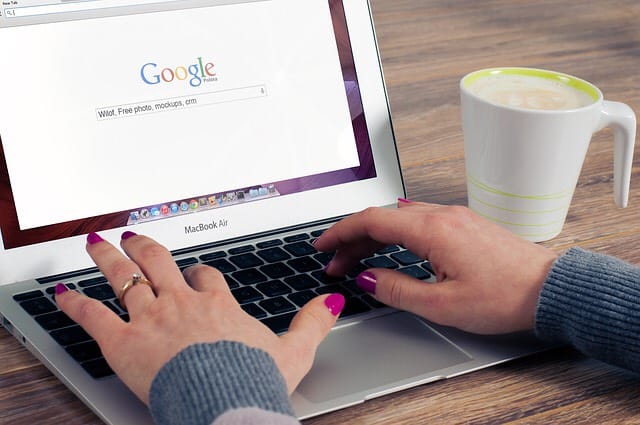


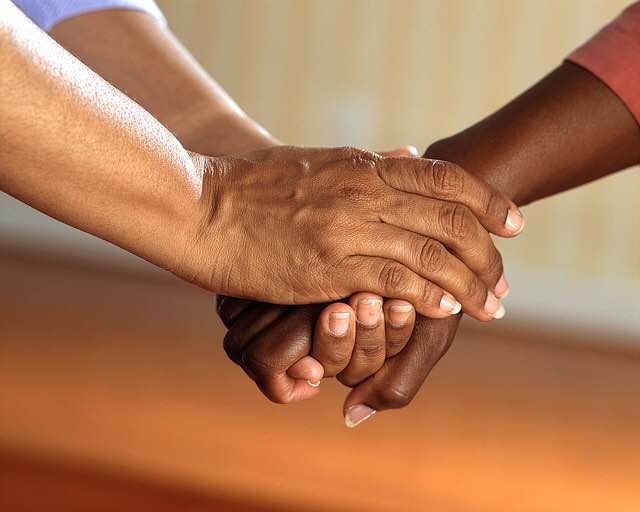




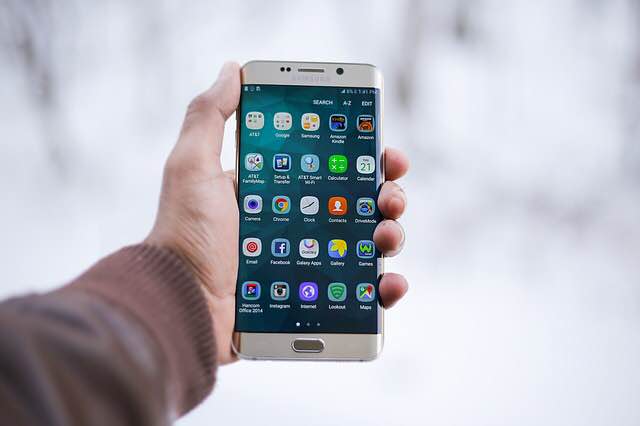
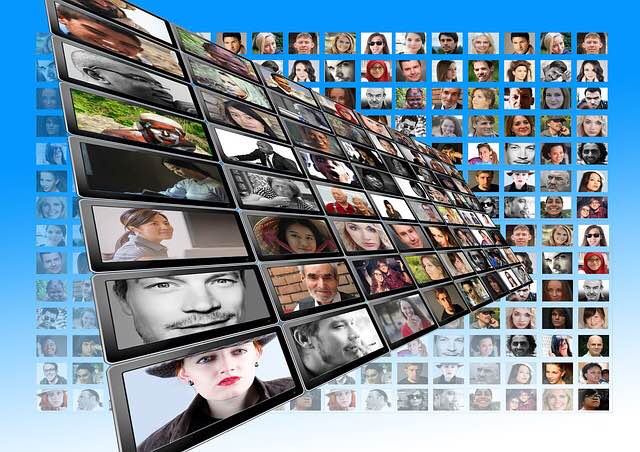
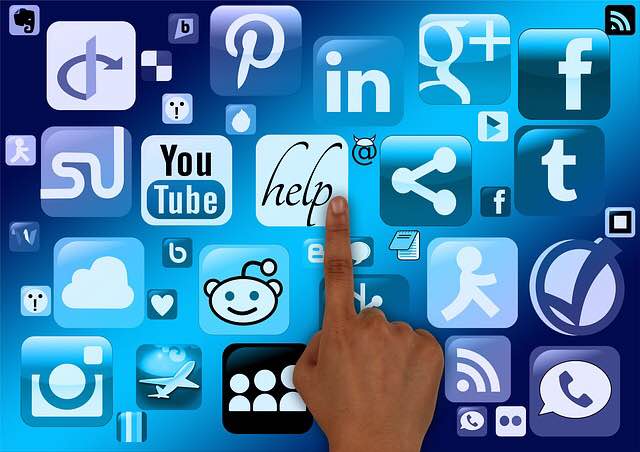
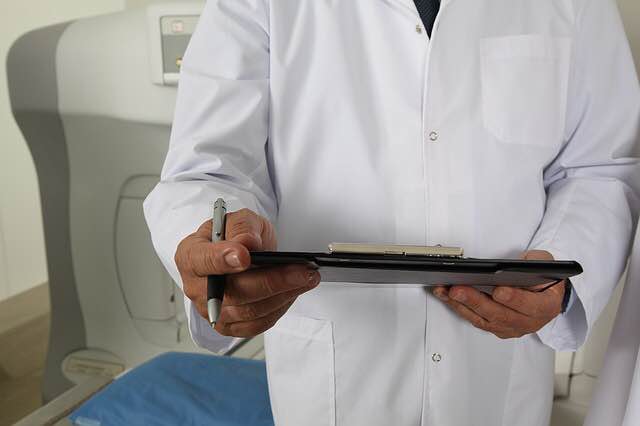
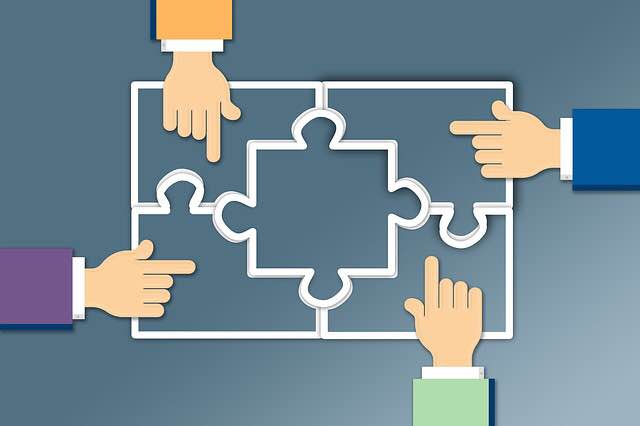

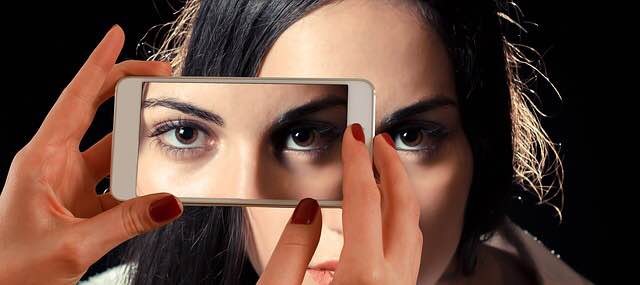
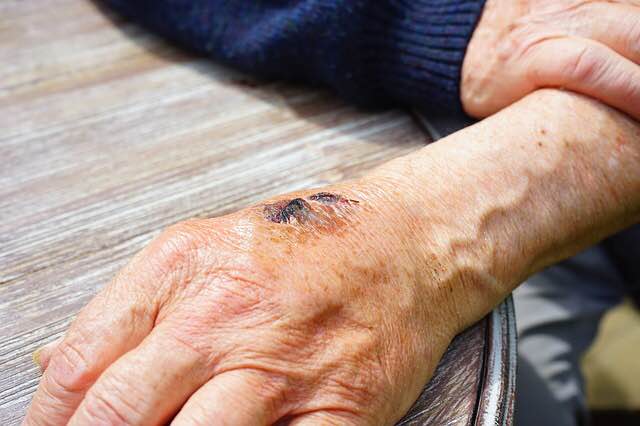
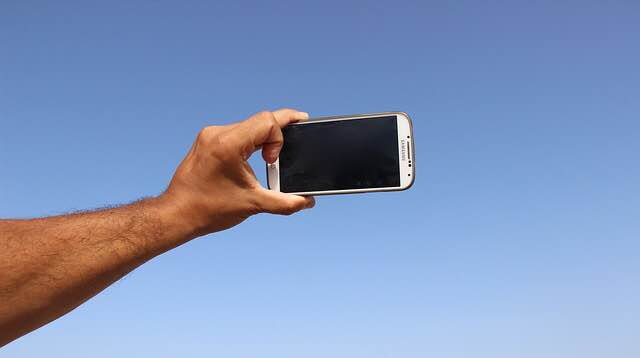

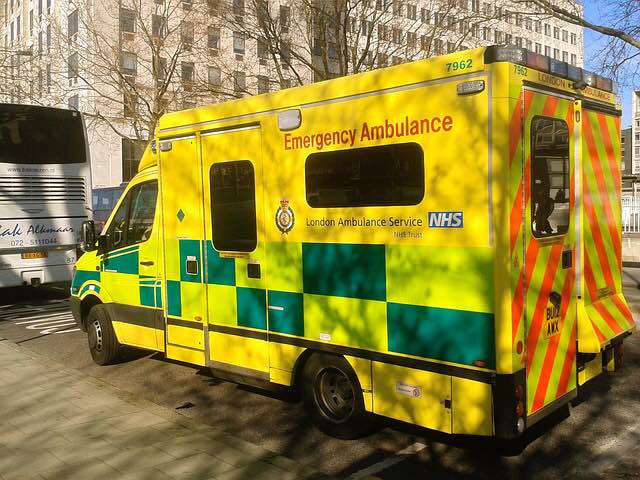
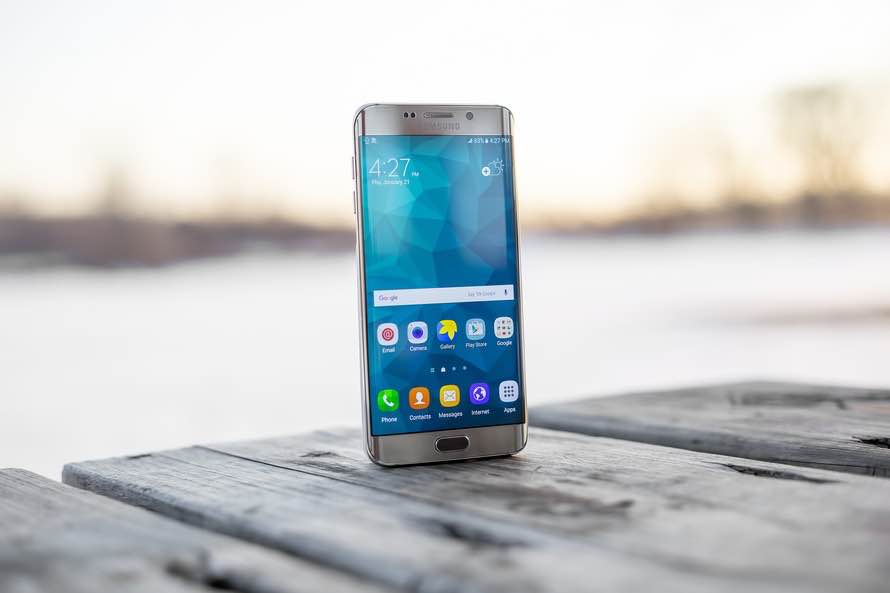


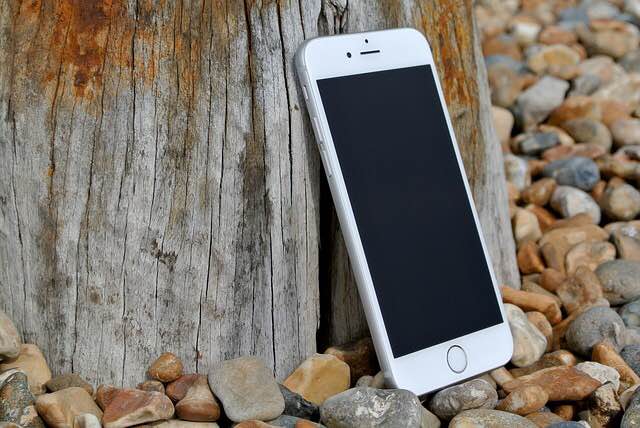

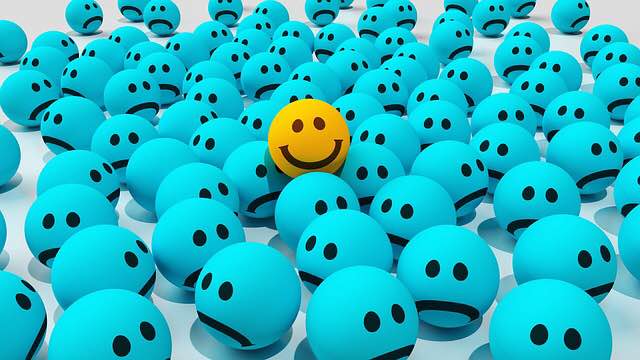
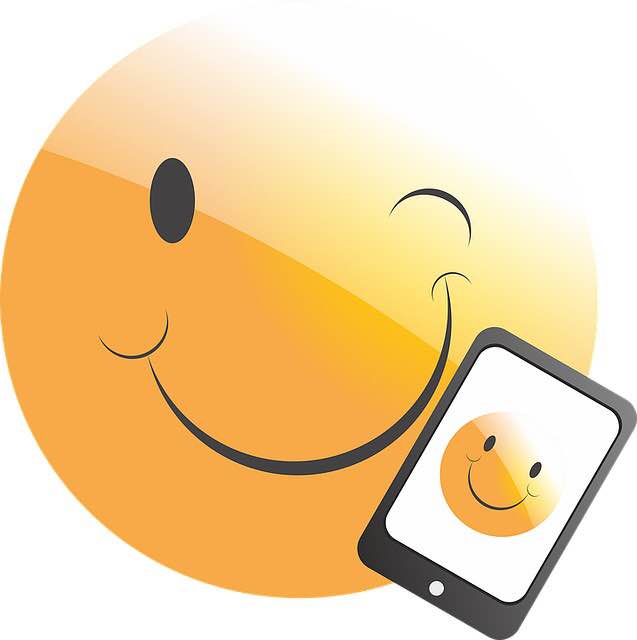
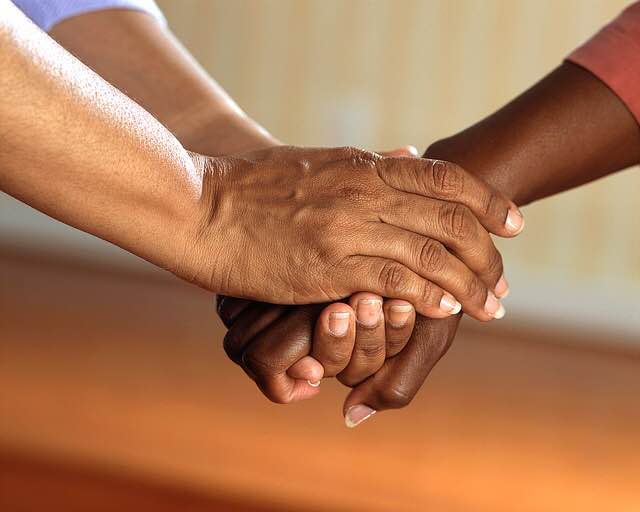
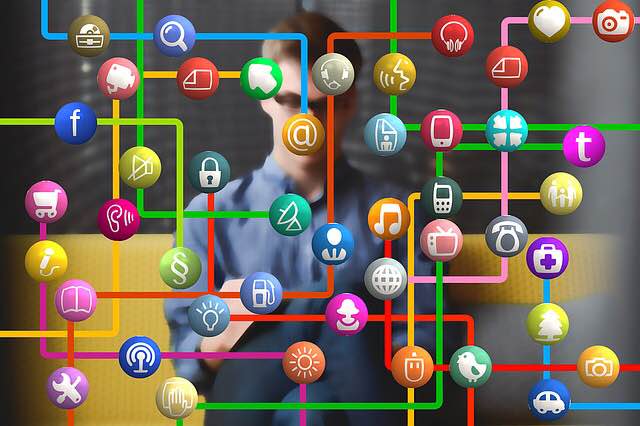

 RSS Feed
RSS Feed
